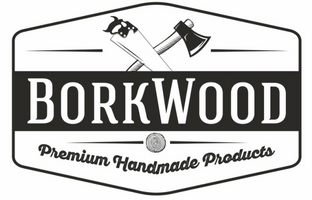Enhance Memory Retention: The Power of Flashcards in Studying
In the realm of education and self-improvement, the ability to retain information efficiently is a skill that can set individuals apart. Whether you are a student preparing for exams, a professional looking to stay sharp, or a lifelong learner pursuing new knowledge, the challenge of retaining what you learn is universal. Fortunately, there is a tried-and-true method that has helped countless learners enhance their retention: flashcards. Flashcards offer a versatile and effective way to reinforce knowledge, making the learning process more efficient and helping to ensure that what you study sticks with you long-term.
Understanding the Power of Flashcards
Flashcards are a simple yet powerful tool that utilizes key principles of cognitive science to improve memory retention. The effectiveness of flashcards lies in their ability to engage the brain in active recall and spaced repetition—two techniques that are proven to enhance memory.
Active recall is the process of actively retrieving information from memory rather than passively reviewing it. When using flashcards, you are prompted to recall the answer to a question or a definition before checking the other side of the card. This active engagement forces your brain to work harder to retrieve the information, thereby strengthening the neural pathways associated with that knowledge. Active recall is far more effective than passive methods, such as re-reading or highlighting, because it encourages deeper processing of the material.
Spaced repetition is another critical component of flashcard learning. This technique involves reviewing information at spaced intervals over time, rather than cramming all at once. Spaced repetition is designed to counteract the forgetting curve—a phenomenon where the ability to recall information decreases over time without review. By strategically spacing out reviews, flashcards help to reinforce memory just as you are about to forget, which strengthens long-term retention.

Benefits of Using Flashcards
Flashcards offer a range of benefits that make them an essential tool for anyone looking to improve their retention and study habits:
How to Create Effective Flashcards
To make the most of flashcards, it’s important to create them in a way that maximizes their effectiveness. Here are some tips for creating effective flashcards:
● Prioritize Difficult Concepts: Create more flashcards for the topics you find challenging. Review these cards more frequently to ensure that you reinforce the most difficult material in your memory.
Integrating Flashcards into Your Study Routine
To maximize the benefits of flashcards, it’s essential to integrate them effectively into your study routine. Here’s how to do it:
Start Early and Be Consistent
Begin creating and using flashcards as soon as you start learning a new topic or course. This gives you ample time to review the material regularly and helps prevent cramming. Consistency is key—make flashcards a regular part of your study routine to ensure long-term retention.
Implement Spaced Repetition
Spaced repetition is crucial for maximizing the effectiveness of flashcards. Use this technique by reviewing your flashcards at increasing intervals over time. Start with frequent reviews when the information is new, and gradually increase the time between reviews as you become more familiar with the material. This method ensures that you reinforce your memory just as you’re about to forget the information.
Use Digital Tools for Enhanced Learning
While traditional paper flashcards are highly effective, digital tools can offer additional benefits. For example, many learners find it useful to convert their notes and study materials into digital flashcards. One helpful approach is to use a PDF to Anki conversion tool, which allows you to turn a PDF document into a set of flashcards that can be easily reviewed on your computer or mobile device. Anki, a popular flashcard app, uses spaced repetition algorithms to schedule reviews automatically, helping you focus on the material that needs the most attention.
Mix Up Your Study Sessions
Avoid going through your flashcards in the same order every time. Shuffle your cards to ensure that you are truly recalling the information and not just memorizing the order of the cards. This approach keeps your brain engaged and ensures that you are testing your memory effectively.
Test Yourself Regularly
Flashcards are a great tool for self-testing. Make a habit of trying to answer the question or explain the concept out loud before flipping the card. This method helps reinforce your understanding and identifies areas where you need further review.
Conclusion
Flashcards are a powerful and versatile tool for enhancing memory retention and improving study efficiency. By leveraging the principles of active recall and spaced repetition, flashcards help to reinforce knowledge and ensure that it is retained over the long term. Whether you’re a student, professional, or lifelong learner, incorporating flashcards into your study routine can significantly boost your learning outcomes.
To make the most of flashcards, focus on creating concise, clear cards that challenge your memory and encourage active engagement with the material. Integrate spaced repetition into your study routine and consider using digital tools like Anki to enhance your learning experience. With consistent use and thoughtful application, flashcards can be your key to efficient retention and academic success.



